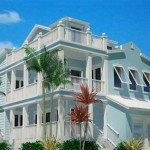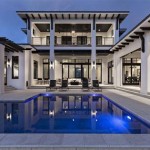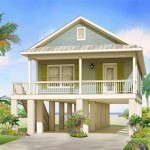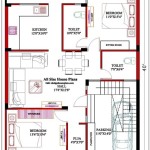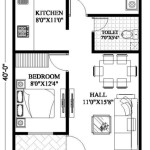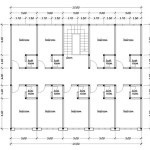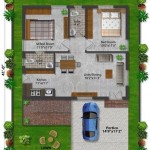Home Plans With Covered Back Porch: Enhancing Outdoor Living
The integration of a covered back porch into a home's design offers a significant enhancement to the living experience. A covered porch extends the usability of outdoor spaces, providing shelter from the elements and creating a seamless transition between indoor and outdoor environments. Home plans incorporating this feature are increasingly sought after, reflecting a desire for versatile spaces that cater to both relaxation and entertainment.
The popularity of covered back porches stems from their adaptability. They can serve as an extension of the living room, a dining area, or simply a quiet retreat for personal reflection. Regardless of the specific use, the covered element provides protection from sun, rain, and even snow, allowing residents to enjoy the outdoors in various weather conditions. Furthermore, the architectural integration of a covered porch often enhances the overall aesthetic appeal of the home, adding visual interest and perceived value.
When considering home plans with a covered back porch, it is crucial to evaluate several factors. These include the size and orientation of the porch, the materials used in its construction, and the overall architectural style of the home. Thoughtful planning ensures that the covered porch seamlessly integrates with the existing structure while meeting the specific needs and preferences of the homeowner.
Benefits of a Covered Back Porch
The advantages of incorporating a covered back porch into a home plan are numerous and varied. Beyond the obvious protection from the elements, a covered porch can significantly enhance the lifestyle of its occupants. Here are some key benefits:
Extended Outdoor Living Space: A covered porch effectively expands the usable living space of a home. It allows for outdoor activities like dining, reading, or simply relaxing to be enjoyed regardless of the weather. This is particularly valuable in regions with frequent rain or intense sunlight. The covered area provides a comfortable haven, shielding residents and guests from the harsh effects of the elements.
Increased Home Value: The addition of a well-designed covered back porch can significantly increase a home's market value. Potential buyers often view this feature as a desirable amenity, appreciating its potential for outdoor living and entertaining. A covered porch adds to the overall appeal of the property, making it more attractive to a wider range of buyers.
Enhanced Privacy: Depending on its design and placement, a covered back porch can provide an added layer of privacy. It can shield occupants from the direct view of neighbors or passersby, creating a more secluded and intimate outdoor space. This is especially beneficial in densely populated areas or for homes with limited backyard privacy.
Protection for Outdoor Furniture: By providing shelter from the elements, a covered porch helps to protect outdoor furniture from damage caused by sun, rain, and snow. This can significantly extend the lifespan of outdoor furniture, saving homeowners money on replacements and maintenance. It also allows for the use of more delicate or less weather-resistant furniture options.
Aesthetic Appeal: A well-designed covered back porch can significantly enhance the aesthetic appeal of a home. It adds visual interest and creates a more inviting and welcoming outdoor space. The porch can be customized to complement the architectural style of the home, adding to its overall curb appeal and perceived value.
Design Considerations for Covered Back Porches
When selecting a home plan with a covered back porch, several design considerations should be taken into account. These considerations include the size, shape, materials, and orientation of the porch. Thoughtful planning ensures that the covered porch seamlessly integrates with the existing structure and meets the specific needs of the homeowner.
Size and Shape: The size and shape of the covered back porch should be proportionate to the overall size and style of the home. A small porch may feel cramped, while a large porch may overwhelm the house. The shape of the porch should complement the architectural lines of the home, creating a cohesive and visually appealing design. Consider the intended use of the porch when determining its size and shape. Will it primarily be used for dining, lounging, or entertaining?
Materials: The materials used in the construction of the covered back porch should be durable, weather-resistant, and aesthetically pleasing. Common materials include wood, composite decking, stone, and brick. The choice of materials should complement the existing materials used in the construction of the home. Consider the long-term maintenance requirements of each material when making your selection.
Orientation: The orientation of the covered back porch should be carefully considered to maximize its usability and enjoyment. Ideally, the porch should be oriented to take advantage of natural light and breezes while minimizing exposure to harsh sunlight and prevailing winds. Consider the position of the sun throughout the day and the direction of prevailing winds in your area when determining the optimal orientation for the porch.
Roof Design: The roof design of the covered back porch should complement the overall architectural style of the home. Common roof designs include gable roofs, hip roofs, and shed roofs. The roof should provide adequate protection from the elements while allowing for proper ventilation. Consider the pitch of the roof and the materials used in its construction when making your selection.
Accessibility: The covered back porch should be easily accessible from both the interior of the home and the surrounding outdoor areas. Consider incorporating multiple access points, such as doors leading from the living room, dining room, or kitchen. Ensure that the porch is level and free of obstacles to allow for easy movement.
Integrating a Covered Back Porch into Existing Home Plans
While many new home plans incorporate covered back porches, it is also possible to add this feature to an existing home. Integrating a covered back porch into an existing structure requires careful planning and execution, but the benefits can be significant.
Assessment and Planning: Before beginning any construction, it is crucial to assess the existing structure and develop a detailed plan. This plan should include the size and shape of the proposed porch, the materials to be used, and the method of attachment to the existing home. It is also important to obtain any necessary permits and approvals from local authorities.
Structural Considerations: The addition of a covered back porch can place significant stress on the existing structure of the home. It is essential to ensure that the existing foundation and framing are adequate to support the added weight. A structural engineer may need to be consulted to assess the existing structure and recommend any necessary reinforcements.
Matching Existing Architecture: The design of the covered back porch should complement the existing architecture of the home. This includes matching the roof style, siding materials, and trim details. A seamless integration will enhance the overall aesthetic appeal of the home and prevent the porch from appearing as an afterthought.
Minimize Disruption: The construction of a covered back porch can be disruptive to the daily life of the occupants. It is important to minimize this disruption by carefully planning the construction process and working efficiently. Communication with the contractor is essential to ensure that the project stays on schedule and within budget.
Professional Installation: Due to the complexities involved in adding a covered back porch to an existing home, it is generally recommended to hire a qualified and experienced contractor. A professional contractor will have the necessary skills and expertise to ensure that the project is completed safely and efficiently.
In conclusion, home plans with covered back porches offer a versatile and desirable living space. They extend the usable area of a home, protect from the elements, and enhance both the value and aesthetic appeal of the property. Careful planning and consideration of design elements will ensure a satisfying and valuable addition to any home.

Expanded Back Woods 3 Bed House Plan 68505vr Architectural Designs Plans

Plan 46041hc Hill Country Home With Massive Porch Homes Ranch Style House Plans

Your Guide To House Plans With Screened In Porches Houseplans Blog Com

One Story House Plan With Vaulted Rear Covered Patio 72917da Architectural Designs Plans

Your Guide To House Plans With Screened In Porches Houseplans Blog Com

Country Style House Plan With Wrap Around Porch Farmhouse Plans New

House Plans With Outdoor Living Space

Southern Home Plans Featuring Front Rear Covered Porches

Single Story 4 Bedroom New American Farmhouse With Outdoor Kitchen On Back Porch House Plan

Back Porch Design Ideas

